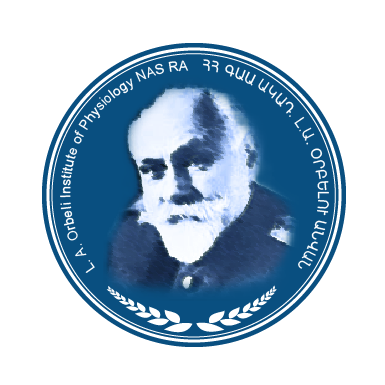- Home
- About us
- Laboratories
- Central Nervous System Physiology
- Central Nervous System functions compensation Physiology
- Immunology and Tissue Engineering
- Smooth Muscle Physiology
- Toxinology and Molecular Systematics
- Sensorimotor Integration
- Laboratory of Histochemistry and Morphology
- Human Psychophysiology
- Integrative Biology
- Purification, Certification and Standardization of Physiologically active substances
- Neuroendocrine Relationships
- Distance Լearning Center
- Laboratory of Hyperspectral Imaging of Surgical Targets
- Biophysics Lab
- News & Events
- Master's Program
- Research
- Councils
- Contact Us
- OIPH Docs
L. A. Orbeli Institute of
Physiology NAS RA
Neuronal Systems Mathematical Modelling Laboratory

Dr.Hovhannes Mkrtchian
Head of Laboratory
Doctor of Sciences
E-mail: hovikm01@yahoo.com, hovik@neuroscience.am
Ph.D. in Computational Neuroscience (1983). Title of Ph.D. thesis: "Investigation of learning processes in neural systems by computational methods" at the Computing Centre of the National Academy of Sciences of Armenia. Doctor of Sciences (2002). Title of thesis: “Investigation of synaptic plasticity mechanisms via computer modeling” at the Orbeli Institute of Physiology of the National Academy of Sciences of Armenia He has 120 scientific publications.
We have elaborated an enhanced double barrier synapse (EDBS) model, which is able to simulate both short- and long-lasting changes of the efficacy of synaptic transmission, such as frequency-dependent facilitation and depression, long- term potentiation (LTP) and long-term depression (LTD). This model is developed from the previous one, where the locus of long-term modifications was fully presynaptic and these modifications did not depend on the postsynaptic effects. The new EDBS model is more complex, but in the same time more realistic. Like in the previous model, in EDBS the long-term modifications take place in the presynaptic part, but are initiated by postsynaptic mechanisms and quantitatively depend on the dynamics of postsynaptic Ca.
The model assumes the presence, in the postsynaptic part, of NMDA receptors, and, possibly, other voltage-gated Ca- channels, through which Ca ions enter the postsynaptic compartment. The model has been verified on experimental data from rat hippocampus, provided by the Neurophysiology Unit of the University of Patra, Greece. The model successfully reproduced the frequency-dependent short-term properties, as well as the characteristic LTP of CA3-CA1 synapses. By fitting the model output to the experimental data, the parameters of these synapses were estimated.
The modified double barrier synapse model was used to analyze the age-dependent changes in paired-pulse facilitation (PPF) observed experimentally in rat hippocampal CA3-CA1 synapses. It was revealed, that the parameters responsible for neurotransmitter mobilization-demobilization, rather than the parameters responsible for release-refilling, are mostly the subjects to change with age.
Based on the previous model of hippocampal CA1 area, a new preliminary model is constructed in which the static synaptic connections are replaced by dynamic ones, represented by EDBS models. The model of hippocampal CA1 area neuronal circuit, which receives synaptic inputs from CA3 neurons via Schaffer collaterals, developed recently, consists of pyramidal cells and two types of interneurons, which are represented by compartmental models, and incorporates mechanisms of feed-forward and recurrent inhibition. Four types of receptor mediated synaptic conductances are used in the model, those of AMPA, GABAA, GABAB and NMDA. Comparison of simulated field responses with the experimentally recorded ones in response to frequency stimulation suggests that, probably, a strong frequency-dependent depression of feed-forward inhibition, due to depression of GABA release, takes place.
Our further research plans concern further verification of the EDBS and CA1 network models, and application of these models to the investigation of physiological mechanisms underlying short- and long-term synaptic plasticity, and the functional roles that both types of plasticity may play in the functioning of different structures of the CNS, including hippocampus and cerebellum.
We will continue also the investigation of the influence of dynamic properties of synapses on the network properties of hippocampal CA1 area neuronal network. The initial research will be carried out using relatively simple network, for the regimes of input stimulation maximally close to the real ones. Afterwards it is planned to complicate the network by introducing diversity in membrane properties of the cells, as well as in the parameters of dynamic synaptic connections





